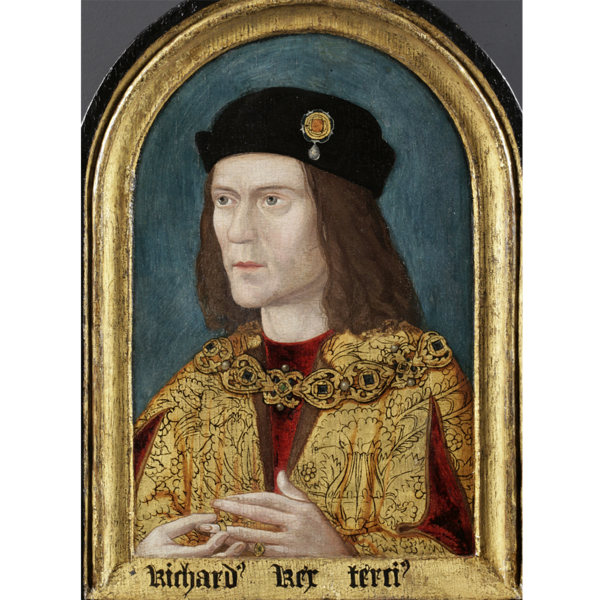Does Richard III's DNA cast doubt on royal legitimacy?
Loading...
A DNA analysis of 500-year-old bones discovered beneath a municipal parking lot indicates that they almost certainly belonged to King Richard III, but it also raises questions about the legitimacy of the the late medieval monarch's successors.
According to a study published Tuesday in the journal, Nature Communications, the bones, which were unearthed in Leicester, England, in 2012, carry genetic markers indicating their owner had blond hair as a child, which darkened with age, and blue eyes. These features, noted a team of British scientists, are consistent with the earliest known painting of the king, which was painted about 25 years after his death at the Battle of Bosworth in 1485. Richard was the most recent English monarch to die on a battlefield.
"The probability that this is Richard is 99.999 percent," Turi King, a geneticist at the University of Leicester who led the research, told the Associated Press.
The scientists examined the bones' mitochondrial DNA, which is inherited from the mother, and found two female-line relatives living today. Wendy Duldig is a niece of Richard III, 18 times removed, and Michael Ibsen is Richard III's nephew, 16 times removed.
But when the team examined Y-chromosomal markers, inherited through the paternal-line, they found no match with living relatives on Richard's father's side, an unambiguous sign of marital infidelity somewhere along the royal lineage.
The researchers could not pinpoint exactly when and where on the family tree the adultery occurred, but they said the findings could raise questions about the legitimacy of Henry V, Henry VI and the entire Tudor dynasty, including Henry VIII and Elizabeth I.
But Kevin Schurer, pro vice chancellor of the University of Leicester and another study author, said claims to the throne are based on more than simply having royal blood and also rest on other things such as battlefield victories and royal marriages.
He said England's current royal family — which has a line of descent from the House of Tudor — should not be worried.
"We are not in any way indicating that Her Majesty (Elizabeth II) shouldn't be on the throne," Schurer said. Researchers said it was the first time there was scientific evidence that questioned medieval lines of succession in the monarchy.
Other academics said history is littered with claims and counter-claims of royal legitimacy.
"When Richard took the throne, he said his brother Edward should never have been king because he was illegitimate," said Steven Gunn, a tutor in history at Oxford University.
Gunn said it was unlikely anyone would ever learn the truth behind the most damaging rumors about Richard — that he murdered his young nephews to hang onto his crown. Still, Gunn said, a more complex picture of the king is now emerging."This opens up a new posthumous discussion about Richard's legacy," the historian said.
Material from the Associated Press and Reuters was used in this report.







